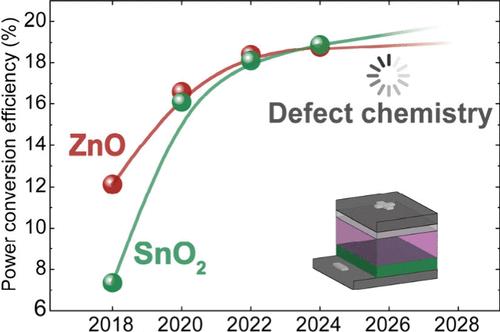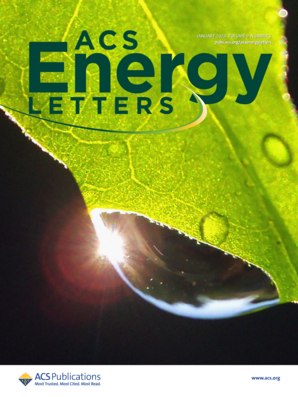Tin Oxide: The Next Benchmark Transport Material for Organic Solar Cells?
IF 19.3
1区 材料科学
Q1 CHEMISTRY, PHYSICAL
引用次数: 0
Abstract
Organic solar cells (OSCs) are one of the most promising emerging photovoltaic technologies due to the rapid increase in efficiency in recent years. While efficiencies over 20% have been reported in laboratory scale devices using the conventional (p-i-n) structure, OSCs with inverted (n-i-p) structures still underperform, reaching values around 18%. Tin oxide (SnO2) has recently emerged as a promising transport layer for OSCs. Yet, some reproducibility challenges shown by the literature have hindered the full adaptation of this electron transport layer (ETL) by the organic solar cell community. This Perspective evaluates the current status of investigation for SnO2 as the transport layer for OSCs, focusing on its integration into state-of-the-art systems and highlighting the challenges toward its implementation. We examine which strategies lead to the most efficient and stable devices using SnO2 and give a critical view of whether this material can soon become the next benchmark electron transport layer for OSCs.

求助全文
约1分钟内获得全文
求助全文
来源期刊

ACS Energy Letters
Energy-Renewable Energy, Sustainability and the Environment
CiteScore
31.20
自引率
5.00%
发文量
469
审稿时长
1 months
期刊介绍:
ACS Energy Letters is a monthly journal that publishes papers reporting new scientific advances in energy research. The journal focuses on topics that are of interest to scientists working in the fundamental and applied sciences. Rapid publication is a central criterion for acceptance, and the journal is known for its quick publication times, with an average of 4-6 weeks from submission to web publication in As Soon As Publishable format.
ACS Energy Letters is ranked as the number one journal in the Web of Science Electrochemistry category. It also ranks within the top 10 journals for Physical Chemistry, Energy & Fuels, and Nanoscience & Nanotechnology.
The journal offers several types of articles, including Letters, Energy Express, Perspectives, Reviews, Editorials, Viewpoints and Energy Focus. Additionally, authors have the option to submit videos that summarize or support the information presented in a Perspective or Review article, which can be highlighted on the journal's website. ACS Energy Letters is abstracted and indexed in Chemical Abstracts Service/SciFinder, EBSCO-summon, PubMed, Web of Science, Scopus and Portico.
 求助内容:
求助内容: 应助结果提醒方式:
应助结果提醒方式:


